Development History
1971 saw the introduction of the of the Marder AIFV into German service. But as the 1980’s started new plans were drawn up for a replacement. The principle idea was put forth in the 1981 planning presentation of the Army for “armored combat troops of the 1990s”.

By 1984 a set of requirement where drafted up and on the 17th of September 1991 KMW delivered an experimental vehicle to the Bundeswehr called Marder 2. However like many project around this time it fell victim to post-Cold War budget cuts.

NGP-SPz
4 years later in 1996 as part of the “New Armored Platform” (NGP) project 3 new vehicles would be developed built upon the same platform. The 3 vehicles where an MBT, SPAA and AIFV also known as the NGP-SPz (NeSPz). However in 1998 the NGP project was massively reduced in scope. The planned MBT and SPAA vehicles where dropped while the NGP-SPz continued development. This vehicle would have protection equivalent to an MBT and weigh 55-72 tones.

The 11th of September 2001 attacks lead to the establishment of an EU wide taskforce consisting of 60.000 soldiers that could be deployed worldwide in 60 days. Such force had to be capable of being airlifted putting severe weight restrictions on them. These restrictions where to much for the NGP-SPz project and in 2002 the program was cancelled. For a while after Germany looked around for an of the shelve option even considering the CV90 but in the end deciding to develop their own vehicle.

Igel/Puma
As the CV90 fell short of the German requirements, a development contract was signed with PSM, a joint venture company between KMW and Rheinmetall. This new vehicle received the name Igel (Hedgehog) when the Budget Committee of the Bundestag gave the green light for the development program. On top of the development the initial contract also included the delivery of a complete system demonstrator and several sub-system demonstrators. These demonstrators where to be used to finalize a set of functional requirements and prove the possibility of serial production to the BWB (since renamed to BAAINBw).

In 2003 the vehicle’s name was changed from Igle to Puma and on the 4th of December 2004 a framework agreement would be signed for the delivery of 5 early pre-series units of the Puma as well an additional 405 series production vehicles. The first pre-series vehicle was delivered on the 20th of December 2005 and would be shown to the public for the first time during the 50th anniversary of the Bundeswehr on the 2nd of May 2006.

These 5 pre-series vehicles would then be tested by the BWB for several years to find any deficiencies in the design of the vehicle. Starting in the middle of 2008 these 5 vehicles underwent extensive testing with the BWB. The Bundeswehr center for automotive and armored vehicles conducted trials on the Hydrops (Combined hydraulic damper and gas spring) suspension made by CWAT but found it lacking and had it replaced by a cooled Hydrops variant by Horstman. Meanwhile to meet track guidance and offroad requirements another set of road wheels would be fitted. The VS02 vehicle was fitted with this 6th road wheel in November 2008.

Further tests were also conducted on the vehicles power pack in 2009 which lead to an increase in the engines displacement, modifications to the torque convertor, new drive sprocket and an alteration to the gearshift procedure. This modified engine received the designation DEMO2 and underwent extensive testing at the facilities of Trier and Baumholder whom designed and build it. Comparative trials were also held against the Leopard 2A6 and Marder 1A3 engines.
Further changes would follow with an increase to the vehicles mine protection following lessons from recent Bundeswehr deployments. This saw an increase to protection from IED and EFP (HEAT projectiles for example) threats. The vehicles mine protection was however not changed from the initial design but the turrets protection was reduced an focus was placed on protecting the crew inside of the vehicle instead of the unmanned turret.
All of these modifications pushed the Puma’s weight above the 32 tones requirement for air transportability. The idea that Puma could conduct combat operations immediately after landing went out of the window because of it. To solve this problem most of the vehicles protection was made modular resulting in a base configuration (Level A) at 31,5 tones. Mounting all the armor (Level C) has the vehicle at 43 tones. This does mean that the vehicle has to be transported in 2 parts and assembled on site.
During March and April of 2009 two of the prototype vehicles were sent to the Armor school in Munster to allow the troops to get their hands on them. This was done to find additional problems with the vehicles during use in real world conditions. Another benefit was that direct feedback could be given on the design and an early start could be made on the vehicles training manuals.
On the 17th of June 2009 the Budget of the Bundestag approved the funding for the procurement of 405 serial production units of the Puma IFV as well as logistical, spare parts and training packages for these vehicles. The first 2 serial production vehicles were handed over to the BWB on the 6th of December 2010. Shortly after delivery these two would be extensively trialed to assess their performance compared to the 5 prototype vehicles. These test where performed on the first 9 serial production vehicles to make sure they met the requirement set with the modifications made between them and the prototype vehicles.
Part of these test was a study in the structural integrity of the vehicles after long periods of intensive use. In addition operational tests were conducted that saw the vehicle used in combat exercises to determine their logistical footprint. At the beginning of May 2011 was it finally the Bundeswehr’s turn to take delivers of their first 2 serial production Puma (S001 and S002). These had been delivered to WTD91 in Meppen. Here training on the new vehicle began immediately for all those involved in the system verification.
In parallel WTD91 also performed trials on the vehicle’s weapon systems. WTD41 meanwhile performed further tests on the vehicles suspension. A fault was found with the deflection of the track behind the idler wheel for which a modification to the design was needed. Further serial production units had this fix integrated while existing vehicles were retrofitted with it.
Climate testing was conducted from the end of 2011 to the beginning of 2012 at Rheinmetall’s climate chambers in Unterlüß. In addition to this vehicles S003 and S004 went to Norway during the winter months of 2012. Two vehicles were tested at temperatures up to -38°C in Norway’s polar regions. Here mobility and live fire trials where held aided by the wide open space they got to do it in.

WTD91 held further live fire trials from April to July 2012 and WTD41 continued suspension testing on S005.
As a consequence of a “realignment” in the Bundeswehr the number of Puma ordered was reduced from 405 to 350. In addition the trials period for the vehicle was extended until the end of September 2013. The delivered serial production vehicles were granted a statement of initial safe operation with restrictions as a requirement for operational tests by the BAAINBw because they had already completed parts of their acceptance trails.
For this additional test were conducted on the braking and steering systems. After several weeks of training by industry the maintenance personnel of the Technical School for Land Systems and School for Technology conducted logistical trails. These were conducted on S007 and lasted from the Beginning of May till September 2013 and took place in Aachen. Here it was examined if the Puma could be maintained by soldiers with parallel established logistical skills. This saw an overall assessment of existing technical documentation and tools made for the vehicles maintenance as well as the test instrumentation and the interchangeability of entire sub components between existing vehicles.
The tactical part of these test was held between May and July 2013 at the training center in Munster by troops from the Panzerlehrbattalion 92. Training for the troops was provided by industry in the expectation that the troops could evaluate the vehicle on their own experience with it instead of having the bias of the other branches testing it influence the results.
During these trials the Puma conducted platoon sized maneuvers for the first time with S003, S004, S006 and S008 taking part. Hot climate trials followed in the Autum of 2013 with S004 and S006 going to the UAE. Here the vehicle was tested at temperatures of 50°C+ with special attention for the accuracy of the vehicles weaponry which was both tested during day and night both when stationary and while on the move.

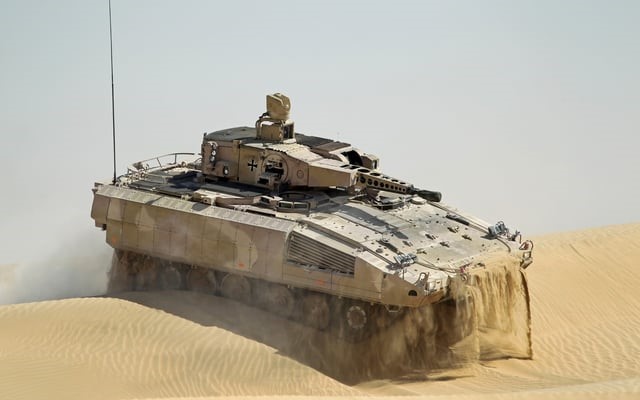
These trials where conducted with both experts from WTD91 and industry present. Due to the high temperatures the air-conditioning systems on both vehicles ran continuously and demonstrated their ability to handle the heat. In addition the MUSS soft-kill active protection system was tested here. Meanwhile at another test site in the UAE, WTD41 was conducting additional mobility trials in desert conditions. Back in Germany additional test were being conducted on the vehicles EMP resilience, IR signature measurements and A- and C- decontamination test.
From June to August of 2014 at the training center in Munster, the troops of the 92nd once again conducted operational test using vehicles S004, S011 S012 and S013.
Finally on the 24th of June 2015, PSM handed over the first Puma IFV to the Bundeswehr in the Operational Level 1 configuration. By 2020 342 Puma IFV and 8 Puma DTT had been delivered to the Bundeswehr.
Armament
The vehicles main armament consists of an unmanned turret with a MK30-2/ABM 30x173mm automatic cannon, MG4 5,56x45mm coaxial machine gun and launcher holding 2 MELLS ATGM’s.
- The MK30-2/ABM has a fire rate of 700 rounds per minute but had to be limited to 200 rounds per minute to meet the required accuracy. It can further depress to -10° and elevate to +45°. The turret itself has a magazine for 200 rounds. An additional 161 rounds are stored in a special compartment in the hull roof. The turret has a build in loading system allowing the crew to load it with the ammunition sored in the hull without needing to open the turret/magazine. The cannon itself is fully stabilized allowing it to engage targets on the move at a maximum effective engagement range of 2.500 meters for ground targets with 3.000 air targets.

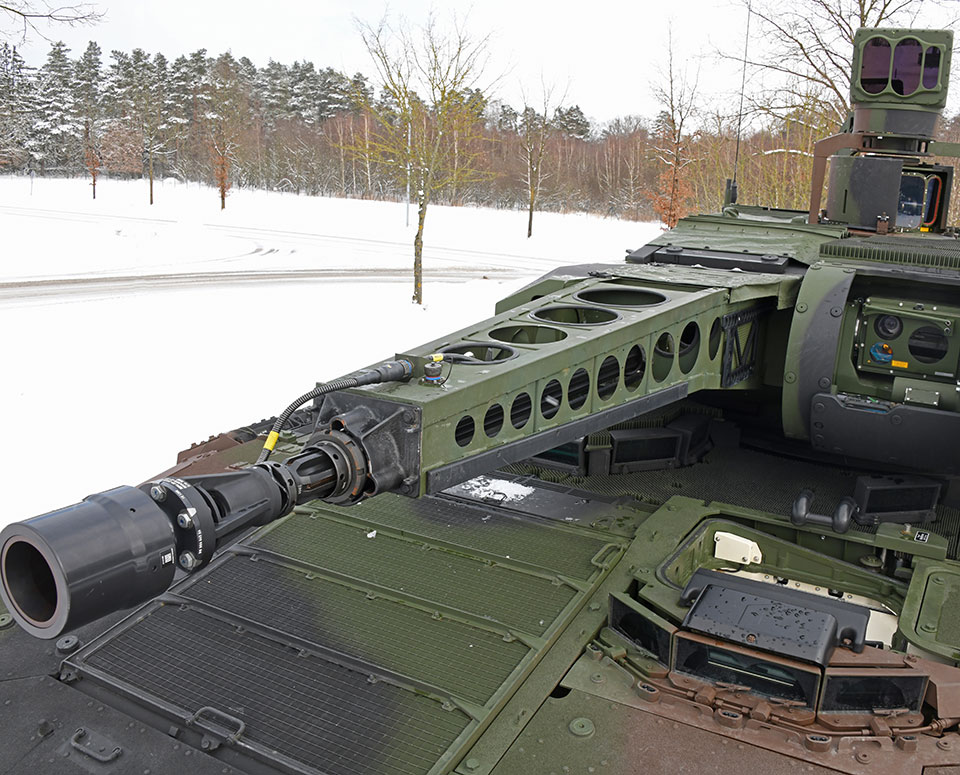
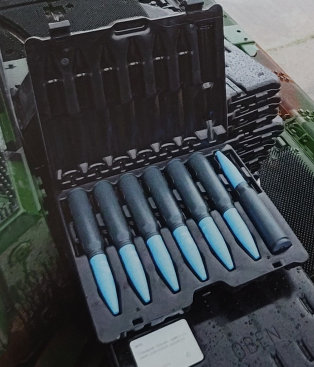
- Mounted coaxially to the main cannon is an MG4 EBW machine gun. It has the same -10° to +45° range of movement as the main cannon with a 1.000 round magazine and is able to engage targets up to 1.000 meters.

- The vehicles (S1 and VJTF variants) main anti-armor capability is provided by a MELLS launcher placed to the left side of the turret. This launcher holds 2 Spike-LR Anti-Tank Guided Missiles. Further the system can also engage low flying aircraft. The Spike-LR missile itself has an engagement range of 4.300m after which it’s fiber optic link with the vehicle is broken. 3 targeting modes are available with the missile. Fire-and-forget lets the missile guide itself to the intended target. Steering-mode needs the gunner to manually steer the missile to its target with the nose mounted camera system. Fire-and-observe meanwhile is a mix of the 2 where the missile still guides itself but lets the gunner observe the flightpath through the camera.


Sights/targeting systems
Besides it’s weapons the turret is also equipped with 2 main sighting systems. Firstly the commander has access to a 360° panoramic PERI-RTWL sight placed on top of the turret. While the Gunners sights are located to the left of the 30mm cannon. These have the ability to elevate +45° and depress -15° but the commanders sight also has the ability to rotate 360° independently from the turret. In addition these two also have a LDM38 laser range finder which is accurate to distances in access of 5.000 meters. Both sights are also equipped with the ATTICA thermal camera capable of detecting a target at 6,3km, Recognizing a target at 5,5km and identifying a target at 4,6km.
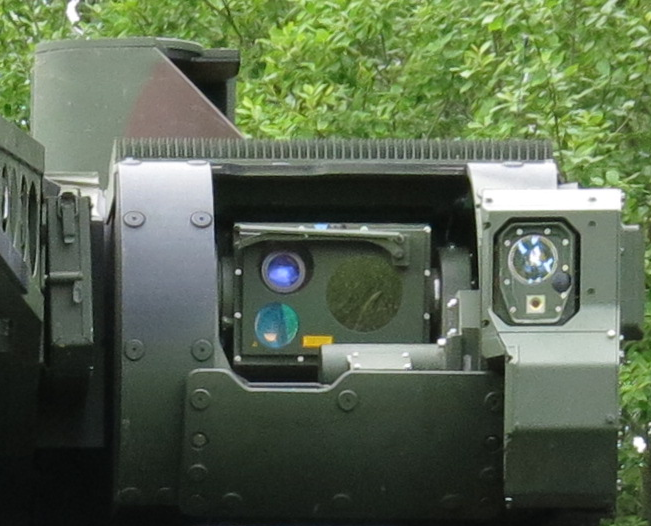

Optronic Observation System
To give both the crew and dismounts greater situational awareness 11 cameras are fitted all around the vehicle providing 270° coverage. Inside the vehicle they are coupled to 2 displays in the troop compartment that the dismounts can use. Every camera has an high pressure air-line to it so that they can have dust and mud cleaned away using pressurized air without the need for someone to exit the vehicle. Contrary to popular believe these cameras record in color, it is the displays that are monochrome. This is a left over from the development where when the screens were selected in 2008 no color option existed that had the required shock resistance.
These displays are being replaced now with colored ones as part of the VJTF and S1 variants.

Mobility
Powering the Puma is an 1.088hp 10-cylinder MTU MT892KA-501-A diesel engine paired with a Renk HSWL 256 hydrodynamic transmission capable of accelerating the vehicle to a maximum speed of 70km/h in both forward and reverse.

One thing that does make the Puma unique among its contemporaries is the de-coupled suspension. The solution allows for significant vibration and noise reduction compared to regular solutions. During testing noise reductions of over 18dBA were measured when compared to conventional tracked vehicles. The suspension as a whole is separate from the hull and gets attached to it by so-called running-gear supports. It is to these supports that all the parts of the suspension are mounted. The supports themselves are fitted to the hull using rubber bushings which also act to further increase the vehicles stability while on the move.
Additionally these supports also contain 6 interconnected external fuel tanks providing an additional 900 liters of fuel to the vehicle. Multiple sensors are installed in these tanks to allow for accurate reporting of fuel levels no matter how the vehicle is positioned.

The Puma’s tracks system built by Defense Service Tracks, the 464E connector tracks are 500mm wide and due to their unique construction allow for a 30% weight saving compared to those used on the Leopard 2A6.
Communication equipment
Depending on the Puma’s role different combinations of radios are installed. All vehicles share the SOLAR 400 V radio for internal crew communication and as an interface between the vehicle crew and the dismounts. Regular squad vehicles have 2 SEM 80 Radios. The Platoon leader, assistant platoon leader and company command vehicles have 1 SEM 80 and 1 SEM 90. Lastly the Battalion command vehicles have 1 SEM 80, 1 SEM90 and 1 SEM 93 radio. All of these radio systems are passed through a INTAS-S passive antenna combiner which allow the vehicle to only need a single VHF 3088 VM antenna to operate.

Further all Pumas are equipped with the IFIS battle management system that is also fielded on the Leopard 2A7 and Boxer. Additionally company command vehicles are equipped with a “Radio Kit 1”. This kit includes a Rocky 3 RK9 notebook, portable Panther display, Sotas-IP control unit and the required power adaptors. Battalion command vehicles are meanwhile equipped with “Radio Kit 2” which is identical to Radio Kit 1 but also includes a SEM 93 radio. Radio Kit 2 does however take the place of one of the dismount seats leaving only 5 seats in the troop compartment.
Protection
The protection of the crew and dismounts was a major requirement for the development of the Puma. The set requirements called for protection against 30mm kinetic energy rounds, RPG-7VL, artillery shrapnel and both blast and EFP mines. This level of protection did put the vehicle considerably above the originally intended 31,5 tones weight limit. It is for this reason that an unmanned turret was chosen as it did not need the same protection as a manned turret.
The vehicles main protection consists of an package of reactive and composite armor blocks. The upper hull sides are protected by explosive reactive armor made by Dynamit Nobel Defence (DND), providing protection against advanced hollow charge munitions. The lighter, original variant of the reactive armor managed to reduce penetration of the RPG-7V to less than 10mm.
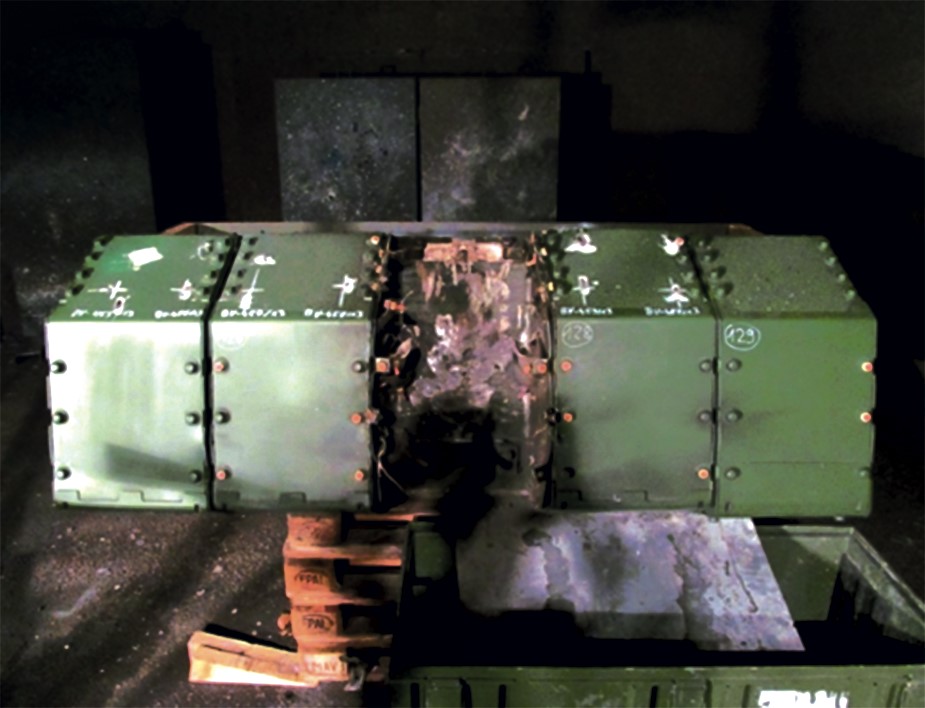
Beneath the reactive armor, the vehicle is fitted with a customized AMAP composite protection solution, made by Rheinmetall. The original manufacturing company has shared glimpses of the performance of a similar armor solution in a demonstration, where the armor system managed to stop a tandem charge shaped warhead. The combination of composite and reactive armor on the vehicle enables protection against most shoulder launched anti-tank weapons.

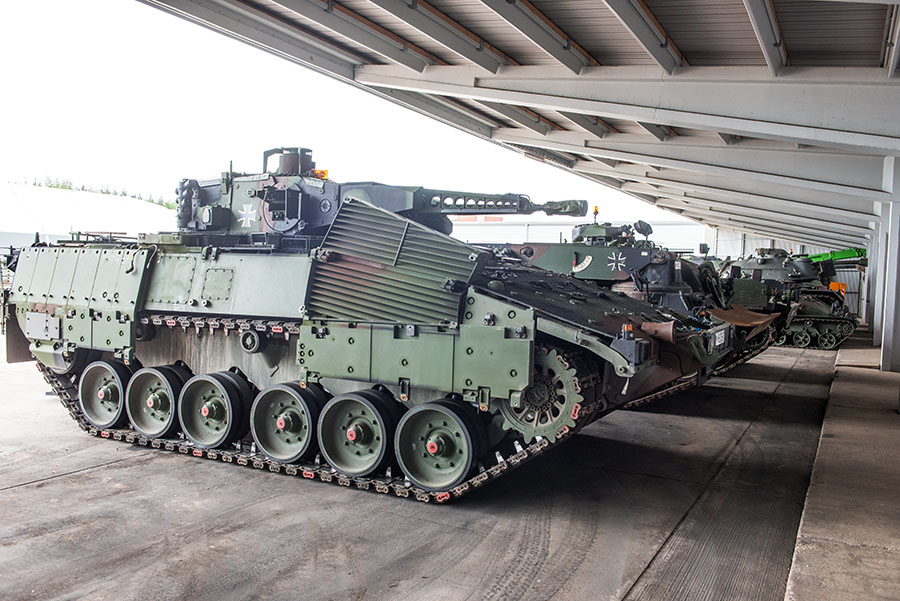
The modules can be removed from the vehicle to allow it to meet the weight limit for air-transportability. These are the A and C configurations mentioned during the development phase.
Frontal armor protection of the Puma is realized with a multi-layered combination of AMAP and steel plates. This solution provides protection against medium calibre kinetic energy ammunition.


The Puma’s turret is manufactured with a special purpose Aluminium alloy, reducing the weight of the structure. Due to the unmanned configuration of the turret the protection standards for this part of the vehicle are lowered. This however does not reduce survivability, as the turret ammunition is seperated from the crew compartment.
The roof of the vehicle is protected by the hedgehog armor, also seen on vehicles like the Panzerhaubitze 2000. Beneath the hedgehog layer, there is a multilayer armor system to further enhance protection against bomblets and artillery shrapnel.
The mine protection of the vehicle significantly exceeds the STANAG 4569 Level 4a standard. To achieve this, a composite mine protection plate is located beneath the hull of the vehicle. To increase survivability, the vehicle’s floor in the dismount compartment is heightened to create a significant spacing to the lower hull. Additionally, all seats for the crew and dismounts are decoupled from the vehicle floor to drastically improve resistence against IED and mine blasts, preventing an excessive energy transfer.
Active protection is provided by the roof mounted MUSS Soft-Kill system. Mounted over top the PERI-RTWL is the system’s IR-jammer. The system is capable of operating autonomously via the built-in missile detectors and laser warning receiver.
Additional protection measures of the vehicle include a 360° shrapnel liner, a Kidde-Deugra fire suppression system and encapsulated ammunition compartments.
Dismounts
Six dismounts are located in the back of the vehicle. The squad consist of a squad leader, deputy squad leader (often armed with a UBGL), Machine gunner, rifleman / machine gunner assistant, anti-tank rifleman and depending on the mission a medic, breacher or second anti-tank rifleman.

An internal weapons rack can hold the nominal cargo in form of 2-3 PzF-3 rockets and 2 firing units, helmets for the vehicle commander and gunner, 32 1,5 liter water bottles, hand grenades, small arms ammunition, signal ammunition, a thermal sight, night vision device and 9 LUCIE or XACT / Mikron night vision goggles. However common practice for crews is to store the Panzerfaust rockets and firing units in the designated rack, with the rest of the space being occupied by food, drinks, snacks and other mission-dependent material. Backpacks are usually stored under the suspended seats of each dismount. Small arms ammunition, tarps and other supplies are mostly stored in the roof compartments of the vehicle.
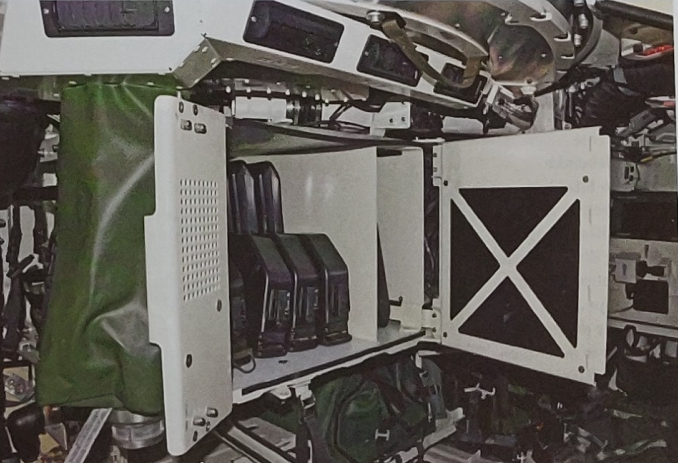
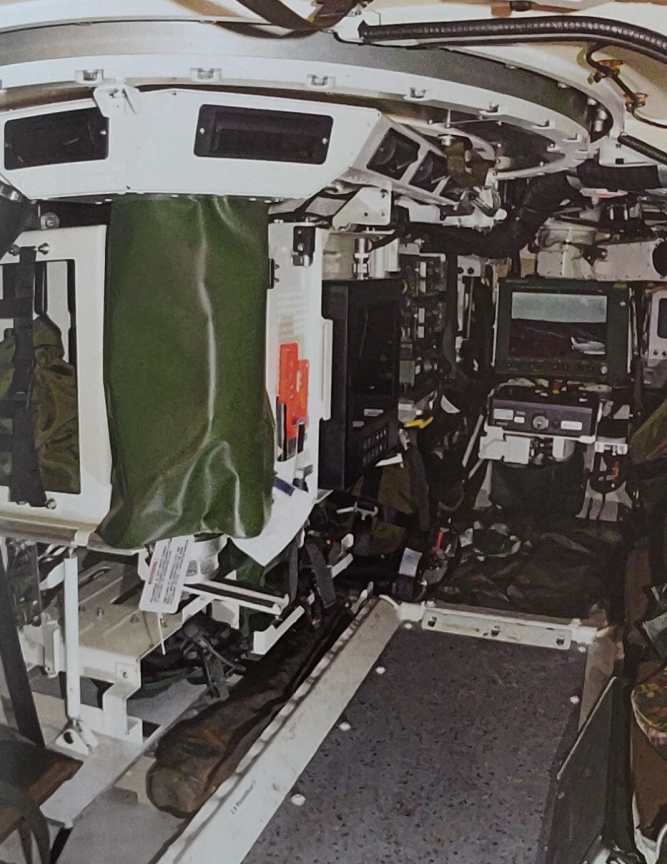
Variants
- DTT; A driver training variant of the Puma that has the turret replaced with an instructor position.

- VJTF; The first step in a fleet wide upgrade plan that aims to solve identified shortcomings of the Puma as it is put forth for service in the 2023 VJTF. For this a new update package called “VJTF 2023” was developed.
The first major upgrade was the introduction of the MELLS ATGM launcher to the left side of the turret giving the vehicle a much needed anti-tank capability. Further improvements where made to the vehicles chassis as well an update to the C2 equipment.
The gunner and commanders sighting system received colored displays. The driver received a forward facing thermal camera and a night-vision capable rear view camera. The displays in the troop compartment also got swapped for colored models. All crew members also received a 360° sighting system with more than 10 cameras deployed on the chassis of the vehicle.
As part of the C2 updates the PNR-1000 radio from Elbit and 2 Soveron VR5000 from Rohde and Schwarz where installed. Company and battalion command vehicles meanwhile received the AN/PRC-117G(V)1(C) satellite radio from L3Harris and the SEM 93 VHF radio from Thales. The previously installed VEM80/90 radios were be removed.
The existing IFIS BMS system has been replaced by a modified version of SitaWare Frontline and a training simulation module was installed allowing the vehicle to be used as a training simulator.
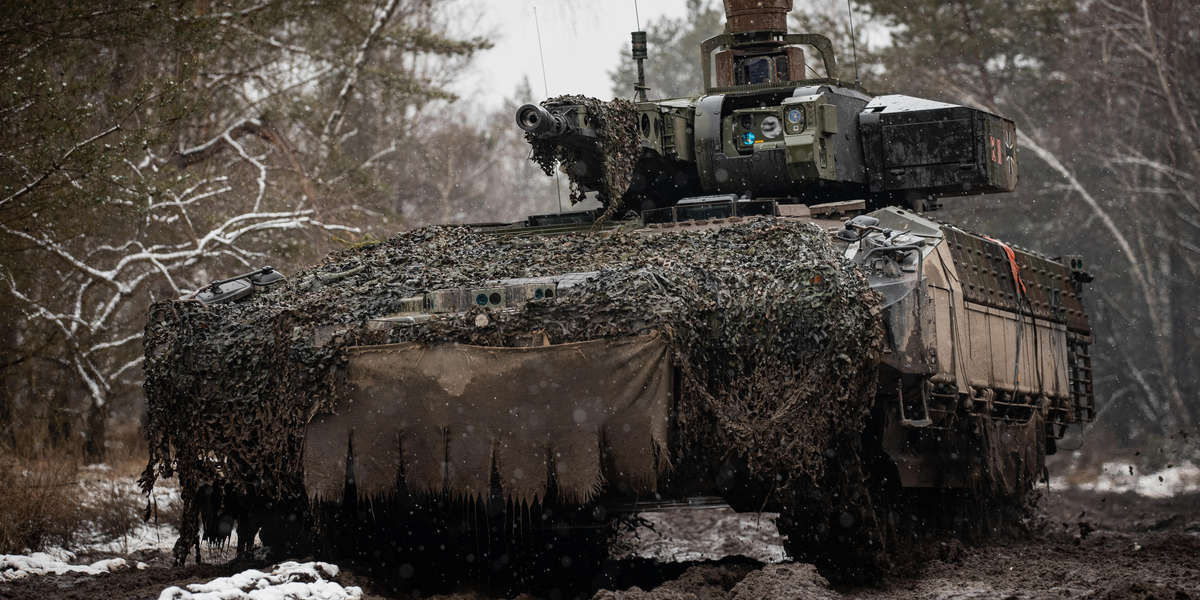
- S1; A further development of the VJTF upgrade package featuring more mature electronic components and software while also fixing the problems found on the VJTF during its service. All existing Puma in German service are in the process of being upgraded to this standard which is to be completed by 2029.
As part of the 100 billion special fund Germany signed a framework agreement with PSM for a total of 229 addition Puma S1 IFV of which they immediately placed an order for 50 new vehicles leaving a further 179 units as options.
Sources
- Accounts from Puma servicemen
- SH_MM tells us about NGP, which was sort of but not really like Armata (https://sturgeonshouse.ipbhost.com/topic/1457-sh_mm-tells-us-about-ngp-which-was-sort-of-but-not-really-like-armata/ )
- Der Schützenpanzer PUMA (https://www.psm-spz.de/technik/mobilitaet/laufwerk/ )
- Puma, a new cat on the block set new standards (https://www.dutchdefencepress.com/puma-a-new-cat-on-the-block-set-new-standards/ )
- SPz Puma IFV undergoing sub-zero trials in Norway (https://www.reddit.com/r/MilitaryPorn/comments/39it7j/spz_puma_ifv_undergoing_subzero_trials_in_norway/?onetap_auto=true&one_tap=true )
- BW – SCHÜTZENPANZER PUMA VJTF (http://tank-masters.de/?page_id=8685 )
- Tankograd – Militairfahrzeug Spezial N 5061 Der Neue Shutzenpanzer der Bundeswehr – Tiel 1 by Ralph Zwilling
- Tankograd – Militairfahrzeug Spezial N 5062 Der Neue Shutzenpanzer der Bundeswehr – Tiel 2 by Ralph Zwilling
- Tankograd – Militairfahrzeug Spezial N 5091 Puma – VJTF Der Neue Shutzenpanzer fur die High Readiness Joint Task Force Land by Ralph Zwilling
- Mittler Report Wehrtechnischer Report 2/2019 D 46892 Schutzenpanzer Puma
